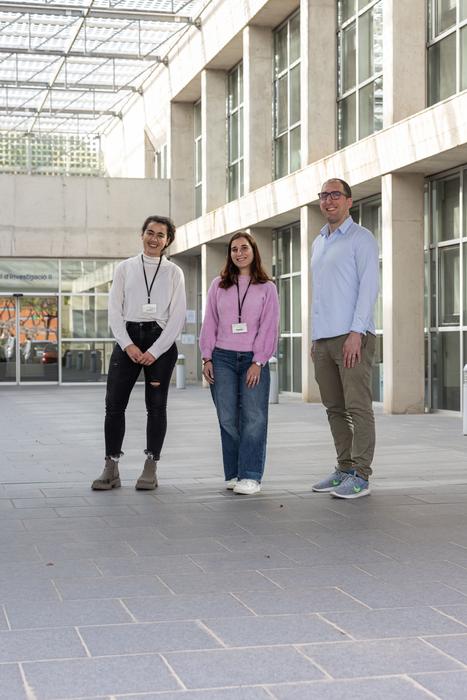Recent investigations at Universitat Jaume I have unveiled remarkable insights into the functionalities of the human brain, particularly concerning decision-making and social interactions. Led by Raphael Kaplan, the DAM-Decision and Memory group has made significant strides in understanding how our cognitive processes are influenced by both spatial and abstract boundaries. The research findings, which have been published in prominent journals, illuminate how these boundaries shape our decision-making strategies in everyday contexts, emphasizing the adaptability of our cognitive frameworks.
The first study, titled “Flexible hippocampal representation of abstract boundaries supports memory-guided choice,” takes us into the intricate neural mechanisms at play during decision-making. This research highlights the roles of the hippocampus and the medial prefrontal cortex, two critical brain regions known for their involvement in memory and executive function, respectively. The study probes the essential question: do the same neural processes govern our understanding of physical environments and abstract constructs, such as economic decisions? The results affirm that they do, unveiling a remarkable ability of the brain to employ contextual boundaries flexibly, even in abstract scenarios.
The hippocampus, traditionally recognized for its role in spatial memory, demonstrates a profound sensitivity to contextual cues, assisting us in orienting ourselves within physical spaces. However, Kaplan’s research introduces a twist. When we confront metaphorical boundaries—such as the trade-offs between cost and size while apartment hunting—the hippocampus retains its pivotal role. This suggests that our brain is not just a repository of geographical data, but also a versatile decision-making assistant capable of reconciling various pieces of abstract information to navigate modern life’s complexities.
In the realm of social cognition, the second study entitled “Social knowledge about others is anchored to self-knowledge in the hippocampal formation” propels us deeper into the nexus between self-perception and the retention of social knowledge. Here, the inquiry centers around how our subjective preferences shape our recollection of others’ choices and preferences. Doctoral student Marta Rodríguez’s research reveals a compelling phenomenon known as “social anchoring,” wherein our biases and self-knowledge influence not only our interactions but also how we remember and interpret the individuals around us.
This study reveals that when organizing social events, the brain does not merely collect information about guests’ preferences in isolation. Instead, our personal biases and self-perceptions create a framework through which we interpret social relationships. This interwoven understanding essentially shapes a mental model, which aids us in recalling preferences and making decisions in social settings, showcasing yet another instance of the brain’s remarkable ability to adapt information based on contextual cues.
Research indicates that both studies are significant not only in their findings but also in their methodological approach. Employing experimental studies, the research team leveraged advanced neuroscientific techniques to explore the intricate workings of the brain. These methods included neuroimaging and behavioral experiments that permitted a granular examination of neural responses to contextual changes.
Through their work, the DAM-Decision and Memory group at Universitat Jaume I emphasizes the importance of interdisciplinary approaches in advancing our understanding of the human brain. Combining cognitive neuroscience, psychology, and social science, the research integrates behavioral data with neural correlates, providing a comprehensive examination of how decision-making functions in everyday life.
Kaplan’s work in this area is particularly noteworthy as it transcends traditional research paradigms by investigating not just how decisions are made but how our cognitive processes shape our interactions with the world. This multidimensional perspective sheds light on the broader implications of decision-making research, suggesting that insights gleaned from studying neural processes can inform strategies in education, marketing, and even mental health interventions.
Furthermore, these findings resonate within the broader scientific community as they provoke questions about the nature of cognition and memory. As researchers continue to uncover the brain’s capabilities, they are challenged to reconsider long-standing misconceptions regarding the rigidity of memory and decision-making structures. Instead, the evidence suggests a fluidity and adaptability that reflects the complexities of human experience.
These studies have garnered significant interest and funding from research programs aimed at nurturing innovative scientific inquiry. Backed by institutions such as the Research Talent Support Programme of the Valencian Community and the Ministry of Science, Innovation and Universities, the work of Kaplan and his team illustrates the dynamic relationship between academic research and practical applications.
In summary, the research emerging from Universitat Jaume I offers profound insights into the mechanisms of human cognition and choice, positioning flexibility and contextual sensitivity at the center of our understanding of decision-making. These studies not only contribute to our scientific knowledge but also underscore the intricate interplay between cognitive functions, societal engagement, and personal biases. As we glean from this innovative research, awareness of how contextual boundaries shape our decisions invites us to reflect on the broader implications for our lives and society.
The outcome of this pivotal research underscores the necessity for continued exploration in cognitive neuroscience and behavioral studies, fostering an environment where new ideas can flourish. As scholars like Kaplan pave the way forward, we are reminded that the complexities of the human brain are far from fully explored, revealing a vast and intriguing landscape where science and human experience converge.
With these findings, the DAM-Decision and Memory group is revolutionizing how we think about decision-making in both personal and social spheres, expanding our understanding of cognitive processes. This work stands as a testament to the creativity and depth of modern scientific inquiry, and as it unfolds, it promises to inspire both scholarly exploration and public interest in the extraordinary capabilities of the human brain.
Subject of Research: Understanding decision-making through contextual boundaries in the brain.
Article Title: Flexible hippocampal representation of abstract boundaries supports memory-guided choice.
News Publication Date: 13-Mar-2025.
Web References: DOI: 10.1038/s41467-025-57644-6.
References: PLOS Biology.
Image Credits: Universitat Jaume I of Castellón.
Keywords: Decision-making, hippocampus, cognitive neuroscience, social cognition, contextual boundaries, memory-guided choice, social biases.




